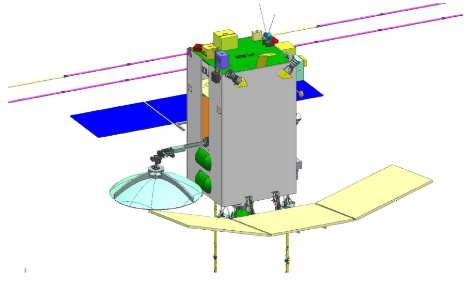India’s space sector is undergoing transformative growth, moving beyond earlier milestones like Chandrayaan and Mars Orbiter Mission (MoM). This rapid expansion aligns with India’s long-term vision of becoming a global leader in space exploration, encompassing future lunar missions, planetary exploration, and a national space station. The recent approval of four major space missions by the Union Cabinet in September 2024 underlines the country’s commitment to expanding its presence in outer space. These missions—Chandrayaan-4, the Venus Orbiter Mission, Gaganyaan, and the Bharatiya Antariksh Station—will shape India’s space journey in the coming decades.
At Space India, the Space Explorers Workshop offers an exciting introduction to rocketry, making rocket science easy and accessible through hands-on learning. Participants explore the fundamentals of rockets, discovering how these space vehicles work and what each part does. With a focus on practical experience, students design and build their own simple rockets, leading to a thrilling launch competition. The sight of their creations soaring high into the sky leaves them amazed! Space Technology and Education Pvt. Ltd. provides a wide range of thoughtfully designed, school-based programs in Astronomy, Space Science, and STEM, all aimed at fostering essential 21st-century skills in students.
Building on Past Achievements
India’s space odyssey gained momentum with missions like Chandrayaan-3, which successfully landed on the Moon’s south pole in 2023. This accomplishment positioned India among the elite group of nations capable of soft lunar landings. Another remarkable feat was the Mars Orbiter Mission (MoM), which made India the first Asian nation to reach Mars in 2014, providing valuable insights into the Martian atmosphere. These missions not only boosted national pride but also demonstrated India’s technological prowess in space exploration.
In 2023, the Aditya L1 mission launched to study the Sun marked another significant milestone. Equipped with advanced instruments, Aditya L1 aims to unravel the mysteries of solar winds and their impacts on Earth’s weather and climate, expanding India’s expertise in heliophysics.
The New Frontier: Approved Missions
The Union Cabinet, chaired by Prime Minister Narendra Modi, approved four groundbreaking missions in 2024, accelerating India’s space ambitions. These missions are:
Chandrayaan-4: This mission will focus on bringing lunar samples back to Earth, a crucial step in future human space exploration. With an approved budget of ₹2,104 crore, Chandrayaan-4 aims to develop indigenous technology for sample retrieval and safe return, potentially laying the foundation for human missions to the Moon.

Venus Orbiter Mission (VOM): Targeting a launch by 2028, VOM is set to explore Venus’s atmosphere and surface, offering insights into the planet’s geological history and atmospheric conditions. The approved budget for this mission is ₹1,236 crore, with ₹824 crore allocated to spacecraft development. This mission marks India’s foray into planetary exploration beyond Mars.

Gaganyaan: India’s first manned mission to space aims to launch human spaceflights to Low Earth Orbit (LEO) and will pave the way for future human space missions. Initially approved in 2018, the program has expanded to include precursor missions for the Bharatiya Antariksh Station. The total funding for the Gaganyaan program now stands at ₹20,193 crore, with an additional ₹11,170 crore approved in 2024.
Bharatiya Antariksh Station (BAS): This ambitious space station is expected to be operational by 2035, positioning India as a key player in microgravity research and space habitation. BAS will serve as a platform for conducting experiments in space, enhancing India’s capabilities in long-duration space missions.

Budget Allocation and Economic Impact:
In the Union Budget 2024-25, the government has reinforced its commitment to space exploration by approving significant funding for ISRO’s upcoming missions. Apart from the ₹2,104 crore for Chandrayaan-4 and ₹1,236 crore for the Venus Orbiter Mission, the Gaganyaan and Bharatiya Antariksh Station programs were allocated ₹20,193 crore.
Additionally, the government has launched a ₹1,000 crore Venture Capital Fund to support space startups. This move is expected to catalyze growth in India’s burgeoning private space sector, which will contribute to global space commerce.
These investments are not just about exploration but also about fostering innovation, creating jobs, and boosting technological capabilities in allied sectors.
Conclusion
India’s space journey is on a trajectory of rapid expansion, from lunar exploration and planetary missions to building a national space station. The missions approved in 2024 symbolize the country’s ambition to become a leader in space exploration and technology. As India prepares for a new era in space, the advancements in science, technology, and industry will undoubtedly propel the nation toward becoming a major player in the global space economy.
—
If you like the blog, enrol your school or yourself (k-12 student) in our School Programs or Online Programs, call us at +91-74020 74020 or write to us for any query: getintouch@space-india.com

